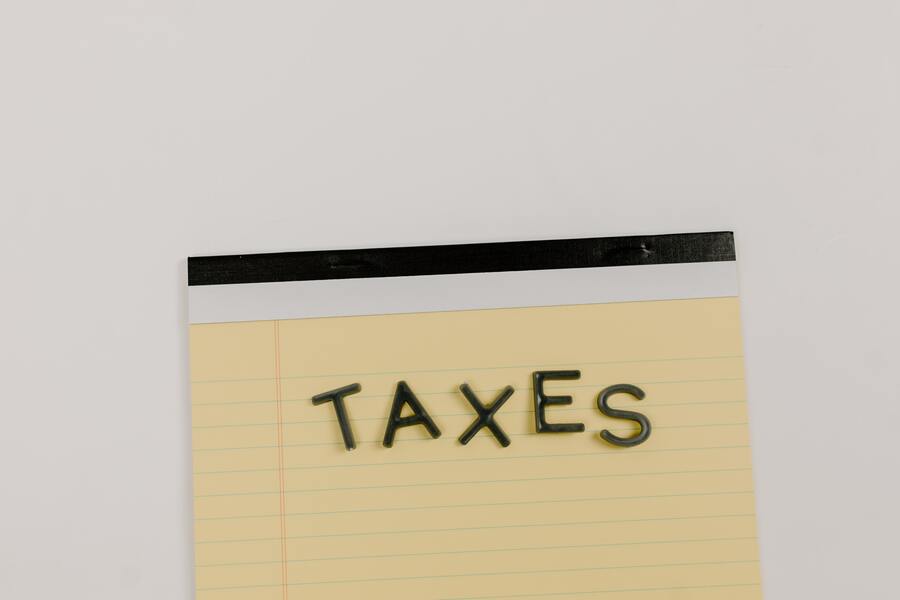
RRSP (Registered Retirement Savings Plan) is a registered investing account in Canada that is designed for retirement. RRSP can lower taxes since contributions to an RRSP are tax deductible up to your RRSP contribution limit.
Deposits to RRSP are generally tax deductible and lower the taxable income. RRSP tax deduction applies to your highest tax bracket for the year, which ranges from a tax savings of around 20% to 55%, depending on your total taxable income.
To maximize RRSP tax deduction, you may want to wait until you earn more than $60,000 a year to get a tax savings of around 30%. Total taxable income of below $50,000 will generally result in tax deductions from RRSP deposits of just about 20%.
In case you expect to make much more in the future, waiting until then can be an option to get more RRSP tax deductions due to a higher tax bracket.
How RRSP Tax Deduction Works
Contributions (deposits) to RRSP lowers your taxable income for the year. For example, a person has a total taxable income of $40,000. An RRSP contribution of $5,000 will lower the taxable income to $35,000. Assuming a tax rate of 20%, this results in a tax savings of $1,000 (20% of $5,000).
In this example, the total taxes owed will be $1,000 less because of the RRSP contribution compared to not contributing.
Federal Tax Rates in Canada
| 2022 Federal Marginal Tax Rate | Total Taxable Income |
| 15% | First $50,197 |
| 20.5% | Portion of taxable income over 50,197 up to $100,392 |
| 26% | Portion of taxable income over $100,392 up to $155,625 |
| 29% | Portion of taxable income over 155,625 up to $221,708 |
| 33% | Over $221,708 |
In addition, provincial tax rates in Canada range from 5% to around 20%. Thus, the total combined tax rate in Canada is between 20% to 55%.
A total taxable income of less than $50,000 will result in tax savings from RRSP deposits of around 20%. This is the equivalent of $20 tax savings for every $100 of RRSP contributions.
On the other hand, a taxable income of more than $120,000 may result in a tax savings of about 40%, which is a tax savings of $40 for every $100 in RRSP contributions.
RRSP Tax Deduction of Someone Making $60,000 a Year
| RRSP Contribution | Tax Savings because of RRSP (Assume a 30% tax bracket) |
|---|---|
| $1,000 | $300 |
| $2,000 | $600 |
| $5,000 | $1,500 |
| $10,000 | $3,000 |
Assumption: A taxable income of also $60,000 on the previous year or an RRSP Contribution Limit of more than $10,000 last year.
RRSP Tax Deduction of Someone Making $120,000 a Year
| RRSP Contribution | Tax Savings because of RRSP (Assume a 40% tax bracket) |
|---|---|
| $1,000 | $400 |
| $2,000 | $800 |
| $5,000 | $2,000 |
| $10,000 | $4,000 |
| $20,000 | $8,000 |
Assumption: A taxable income of also $60,000 on the previous year or an RRSP Contribution Limit of more than $10,000 last year.
Calculator Tip – To calculate 25% of $5,000, simply enter “25% X 5,000” on a calculator, which will be 1,250.
RRSP Contribution Limit
RRSP has a contribution limit which is 18% of your previous year’s income, up to about $29,000. In addition, unused RRSP limits from previous years will carry forward indefinitely. Deposits above your RRSP contribution limit are not tax deductible and are subject to a 1% penalty per month.
The RRSP contribution limit amount can be found on your most recent tax assessment, or on your CRA My account.
How to Fully Take Advantage the RRSP Tax Deductions
To fully take advantage of the features of RRSP, let us first take a look at how RRSP works.
How RRSP Works
Deposits to RRSP (Contributions) – Tax deductible and can lower your taxable income up to your RRSP Contribution limit.
Withdrawals from RRSP – Generally considered as taxable income
Also, any investment gains on an RRSP are not taxable. RRSP investments can grow tax-free while it stays on the account. However, investment gains will eventually become taxable since RRSP withdrawals are taxable income.
To maximize RRSP Tax deductions, RRSP deposits are best when you have a high income as this will result in higher tax savings due to a high tax bracket. Since withdrawals are taxable, withdrawals are best done when you have a low taxable income, which often happens during retirement.
RRSP has no minimum age to withdraw. RRSP withdrawals are best during retirement since there is less taxable income (no employment income), which will result in a lower tax rate.
RRSP Investment Options
Investment options in an RRSP include stocks, bonds, savings accounts, GICs, mutual funds, and more. There are also RRSP accounts where funds are automatically invested and managed.
A mix of investments on an RRSP is possible since you can open multiple RRSP accounts. With multiple RRSP accounts, the RRSP Contribution Limit still exists. Total deposits to RRSP accounts should be below the RRSP limit to avoid penalties.
Questrade RRSP
Questrade is an investing platform where you can invest in stocks, ETFs, bonds, and more investments listed in the United States and Canada. Questrade has been around since 1999.
You can choose to buy and sell individual stocks, ETFs, and other investments on a Questrade RRSP account.
- Minimum of $1,000 to open an account
- $4.95 commission fees for every stock trade (buy or sell)
- 2% US dollar exchange rate fee
- Questrade is operating for more than 20 years. More than 200,000 new accounts every year
Questrade – How to Buy and Sell Stocks
The tutorial video is done on a Questrade Margin account. The process of how to buy and sell stocks on Questrade RRSP is the same.
Visit questrade.com for more details. Get $50 in free trades rebate (up to 10 free trades) when you open a new Questrade TFSA account – Create a new account on questrade.com (promo automatically applies)
Alternative to RRSP – TFSA
RRSP may not be fully utilized when you are in a low tax bracket. After all, RRSP will be taxable eventually on withdrawal. Should you expect to make more in the future, preserving RRSP contribution limits to be used in the future instead of today is an option.
Similar to RRSP, TFSA (Tax-Free Savings Account) can hold investments such as stocks, bonds, ETFs, and more investments. On the other hand, deposits to TFSA are not tax deductible.
Investments gains and dividends on a TFSA are also tax-free, even when withdrawn. TFSA offers more flexibility since withdrawals are tax-free. Also, investment gains in a TFSA are tax-free.
To learn more about TFSA, (insert link)
Wealthsimple Trade TFSA or RRSP
- No minimum requirement. Anyone can start with $100 or less.
- $0 commission fees on trades
- 1.50% exchange rate fee for US dollar trades
- Fractional Trading available
- More than 2 Million People have a Wealthsimple account
- Best for Beginners – Platform is simple and easily understandable
Wealthsimple TFSA Tutorial – How to Buy and Sell Stocks
Visit wealthsimple.com for more details. Get a $25 cash bonus when you open a new Wealthsimple account – Create a new account on wealthsimple.com
TFSA vs RRSP
RRSP – Best for retirement savings.
TFSA – More flexibility since withdrawals on TFSA are tax-free anytime. Best for medium to long-term investments. Investment gains on TFSA are tax-free.
| TFSA | RRSP |
| Contribution Limit of $6,000 on 2021 | Contribution Limit – 18% of your previous year’s income (up to $29,210 on 2022) |
| Investments can grow tax free | Investments can grow tax free |
| Deposits are not tax deductible | Deposits are tax deductible up to your RRSP contribution limit |
| Tax Free withdrawals | Withdrawals are taxable |
| Unused limits are added next year’s limit | Unused limits are added next year’s limit |
How much will RRSP reduce taxes?
RRSP will reduce taxes by your total RRSP contributions multiplied by your marginal tax rate. A high taxable income will mean higher tax deductions on your RRSP contributions. RRSP can reduce your taxes between 20% to 55%, which depends on your total taxable income.
Is RRSP income tax deductible?
RRSP deposits (contributions) are income tax deductible up to your RRSP Contribution Limit which is stated on your previous year’s tax return. RRSP income tax deductible is optimized when you contribute to an RRSP when you have a high taxable income and withdraw when you have less income or during retirement.
